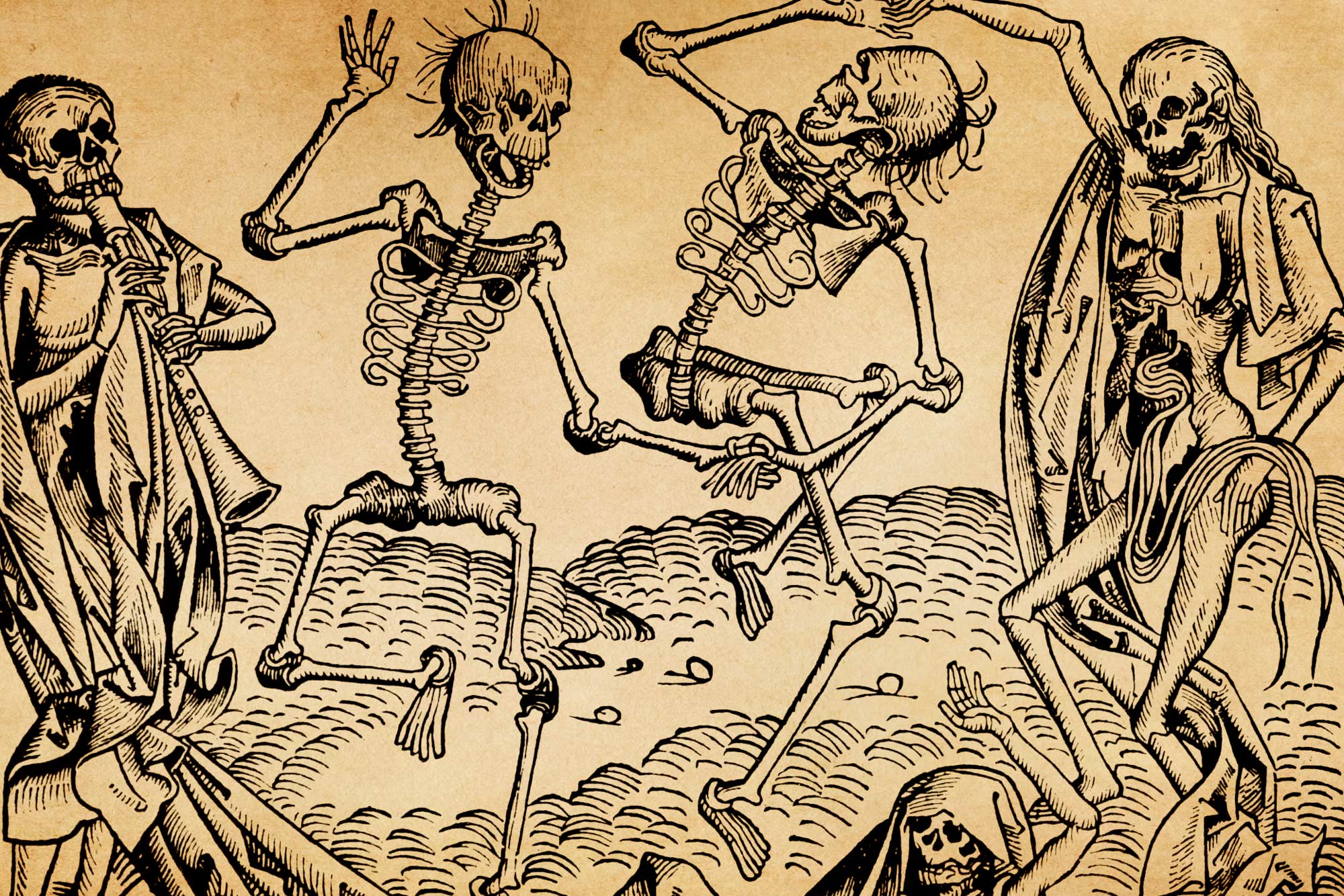According to the World Health Organization, A pandemic is defined as “an epidemic occurring worldwide, or over a very wide area, crossing international boundaries and usually affecting a large number of people”. The classical definition includes nothing about population immunity, virology or disease severity. Cholera, bubonic plague, smallpox, and influenza are some of the most brutal killers in human history. And outbreaks of these diseases across international borders, are properly defined as pandemic, especially smallpox, which throughout history, has killed between 300-500 million people in its 12,000 year existence. The List of pandemics which reshaped world history are:
Coronavirus Pandemic
Beginning in December 2019, in the region of Wuhan, China, a new (“novel”) coronavirus began appearing in human beings. It has been named Covid-19, a shortened form of “coronavirus disease of 2019.” This new virus spreads incredibly quickly between people, due to its newness – no one on earth has an immunity to Covid-19, because no one had Covid-19 until 2019. While it was initially seen to be an epidemic in China, the virus spread worldwide within months. The WHO declared Covid-19 a pandemic in March, as at August 4th 2020 there were 18 519 579 cases of COVID and 700 539 deaths.
With the coronavirus pandemic, people all over the world have become more aware of the best practices during a pandemic, from careful hand-washing to social distancing. Countries across the world declared mandatory staty-at-home measures, closing schools, businesses, and public places. Dozens of companies and many more independent researchers began working on tests, treatments, and vaccines. The push for the human race to survive the pandemic became the primary concern in the world.
The outcome of the Covid-19 pandemic is impossible to predict, at the time of this writing. But we can learn from pandemics in history to determine our best courses. These are our teachers – the Spanish flu, the AIDS pandemic, and more.
HIV/AIDS Pandemic
First identified in Democratic Republic of the Congo in 1976, HIV/AIDS has truly proven itself as a global pandemic, killing more than 36 million people since 1981. Currently there are between 31 and 35 million people living with HIV, the vast majority of those are in Sub-Saharan Africa, where 5% of the population is infected, roughly 21 million people. As awareness has grown, new treatments have been developed that make HIV far more manageable, and many of those infected go on to lead productive lives. Between 2005 and 2012 the annual global deaths from HIV/AIDS dropped from 2.2 million to 1.6 million.
1968 Flu Pandemic
A category 2 Flu pandemic sometimes referred to as “the Hong Kong Flu,” the 1968 flu pandemic was caused by the H3N2 strain of the Influenza A virus, a genetic offshoot of the H2N2 subtype. From the first reported case on July 13, 1968 in Hong Kong, it took only 17 days before outbreaks of the virus were reported in Singapore and Vietnam, and within three months had spread to The Philippines, India, Australia, Europe, and the United States. While the 1968 pandemic had a comparatively low mortality rate (.5%) it still resulted in the deaths of more than a million people, including 500,000 residents of Hong Kong, approximately 15% of its population at the time.
Asian Flu of 1956-1958
Asian Flu was a pandemic outbreak of Influenza A of the H2N2 subtype, that originated in China in 1956 and lasted until 1958. In its two-year spree, Asian Flu traveled from the Chinese province of Guizhou to Singapore, Hong Kong, and the United States. Estimates for the death toll of the Asian Flu vary depending on the source, but the World Health Organization places the final tally at approximately 2 million deaths, 69,800 of those in the US alone.
1918 Flu Pandemic
Between 1918 and 1920 a disturbingly deadly outbreak of influenza tore across the globe, infecting over a third of the world’s population and ending the lives of 20 – 50 million people. Of the 500 million people infected in the 1918 pandemic, the mortality rate was estimated at 10% to 20%, with up to 25 million deaths in the first 25 weeks alone. What separated the 1918 flu pandemic from other influenza outbreaks was the victims; where influenza had always previously only killed juveniles and the elderly or already weakened patients, it had begun striking down hardy and completely healthy young adults, while leaving children and those with weaker immune systems still alive. SEE: Difference Between Pandemic vs Epidemic vs Outbreak
Sixth Cholera Pandemic (1910-1911)
Like its five previous incarnations, the Sixth Cholera Pandemic originated in India where it killed over 800,000, before spreading to the Middle East, North Africa, Eastern Europe and Russia. The Sixth Cholera Pandemic was also the source of the last American outbreak of Cholera (1910–1911). American health authorities, having learned from the past, quickly sought to isolate the infected, and in the end only 11 deaths occurred in the U.S. By 1923 Cholera cases had been cut down dramatically, although it was still a constant in India.
Flu Pandemic (1889-1890)
Originally the “Asiatic Flu” or “Russian Flu” as it was called, this strain was thought to be an outbreak of the Influenza A virus subtype H2N2, though recent discoveries have instead found the cause to be the Influenza A virus subtype H3N8. The first cases were observed in May 1889 in three separate and distant locations, Bukhara in Central Asia (Turkestan), Athabasca in northwestern Canada, and Greenland. Rapid population growth of the 19th century, specifically in urban areas, only helped the flu spread, and before long the outbreak had spread across the globe. Though it was the first true epidemic in the era of bacteriology and much was learned from it. In the end, the 1889-1890 Flu Pandemic claimed the lives of over a million individuals.
Third Cholera Pandemic (1852–1860)
Generally considered the most deadly of the seven cholera pandemics, the third major outbreak of Cholera in the 19th century lasted from 1852 to 1860. Like the first and second pandemics, the Third Cholera Pandemic originated in India, spreading from the Ganges River Delta before tearing through Asia, Europe, North America and Africa and ending the lives of over a million people. British physician John Snow, while working in a poor area of London, tracked cases of cholera and eventually succeeded in identifying contaminated water as the means of transmission for the disease. Unfortunately the same year as his discovery (1854) went down as the worst year of the pandemic, in which 23,000 people died in Great Britain.
The Black Death (1346-1353)
The Black Death of 1347 was the first major European outbreak of the second great plague pandemic that occurred over the 14th to 18th centuries. In 1346 it was known in the European seaports that a plague epidemic was present in the East. In 1347 the plague was brought to the Crimea from Asia Minor by the Tartar armies of Khan Janibeg, who had laid siege to the town of Kaffa (now Feodosya in Ukraine), a Genoese trading town on the shores of the Black Sea. The siege of the Tartars was unsuccessful and before they left, from a description by Gabriel de Mussis from Piacenza, in revenge they catapulted over the walls of Kaffa corpses of people who had died from the Black Death. In panic the Genoese traders fled in galleys with ‘sickness clinging to their bones’ to Constantinople and across the Mediterranean to Messina, Sicily, where the great pandemic of Europe started. By 1348 it had reached Marseille, Paris and Germany, then Spain, England and Norway in 1349, and eastern Europe in 1350. The Tartars left Kaffa and carried the plague away with them spreading it further to Russia and India. A description of symptoms of the plague was given by Giovanni Boccaccio in 1348 in his book Decameron, a set of tales of a group of Florentines who secluded themselves in the country to escape the plague :
“.. in men and women alike it first betrayed itself by the emergence of certain tumours in the groin or armpits. Some of which grew as large as a common apple, others as an egg, some more, some less, which the common folk called gavocciolo. From the two said parts of the body this deadly gavocciolo soon began to propagate and spread itself in all directions indifferently; after which the form of the malady began to change, black spots or livid making their appearance in many cases on the arm or the thigh or elsewhere.
The term “Black Death” was not used until much later in history and in 1347 was simply known as “the pestilence” or “pestilentia”, and there are various explanations of the origin of the term. Butler [11] states the term refers to the haemorrhagic purpura and ischaemic gangrene of the limbs that sometimes ensued from the septicaemia. Ziegler17 states it derives from the translation of the Latin pestis atra or atra mors, ‘atra’ meaning ‘terrible’ or ‘dreadful’, the connotation of which was ‘black’, and ‘mors’ meaning ‘death’, and so ‘atra mors’ was translated as meaning ‘black death’.
Plague Of Justinian (541-542)
Thought to have killed perhaps half the population of Europe, the Plague of Justinian was an outbreak of the bubonic plague that afflicted the Byzantine Empire and Mediterranean port cities, killing up to 25 million people in its year long reign of terror. The epidemic originated in Ethiopia in Africa and spread to Pelusium in Egypt in 540. It then spread west to Alexandria and east to Gaza, Jerusalem and Antioch, then was carried on ships on the sea trading routes to both sides of the Mediterranean, arriving in Constantinople (now Istanbul) in the autumn of 541.
The Byzantine court historian, Procopius of Caesarea, in his work History of the Wars, described people with fever, delirium and buboes He wrote that the epidemic was one ‘by which the whole human race came near to be annihilated’. Procopius wrote of the symptoms of the disease :
“ with the majority it came about that they were seized by the disease without becoming aware of what was coming either through a waking vision or a dream. … They had a sudden fever, some when just roused from sleep, others while walking about, and others while otherwise engaged, without any regard to what they were doing. And the body showed no change from its previous colour, nor was it hot as might be expected when attacked by a fever, nor indeed did any inflammation set in, but the fever was of such a languid sort from its commencement and up till evening that neither to the sick themselves nor to a physician who touched them would it afford any suspicion of danger. It was natural, therefore, that not one of those who had contracted the disease expected to die from it. But on the same day in some cases, in others on the following day, and in the rest not many days later, a bubonic swelling developed; and this took place not only in the particular part of the body which is called boubon, that is, “below the abdomen,” but also inside the armpit, and in some cases also beside the ears, and at different points on the thighs.”
The focus of the Justinian pandemic was Constantinople, reaching a peak in the spring of 542 with 5,000 deaths per day in the city, although some estimates vary to 10,000 per day, and it went on to kill over a third of the city’s population. Victims were too numerous to be buried and were stacked high in the city’s churches and city wall towers, their Christian doctrine preventing their disposal by cremation. Over the next three years plague raged through Italy, southern France, the Rhine valley and Iberia. The disease spread as far north as Denmark and west to Ireland, then further to Africa, the Middle East and Asia Minor. Between the years 542 and 546 epidemics in Asia, Africa and Europe killed nearly 100 million people.15, 16
The pandemic had a drastic effect and permanently changed the social fabric of the Western world. It contributed to the demise of Justinian’s reign. Food production was severely disrupted and an eight year famine followed. The agrarian system of the empire was restructured to eventually become the three field feudal system. The social and economic disruption caused by the pandemic marked the end of Roman rule and led to the birth of culturally distinctive societal groups that later formed the nations of medieval Europe.
Further major outbreaks occurred throughout Europe and the Middle East over the next 200 years – in Constantinople in the years 573, 600, 698 and 747, in Iraq, Egypt and Syria in the years 669, 683, 698, 713, 732 and 750 and Mesopotamia in 686 and 704. In 664 plague laid waste to Ireland, and in England it came to be known as the Plague of Cadwaladyr’s Time, after a Welsh king who contracted plague but survived it in 682. The plague continued in intermittent cycles in Europe into the mid-8th century and did not re-emerge as a major epidemic until the 14th century.
Antonine Plague (165 AD)
Also known as the Plague of Galen, the Antonine Plague was an ancient pandemic that affected Asia Minor, Egypt, Greece, and Italy and is thought to have been either Smallpox or Measles, though the true cause is still unknown. This unknown disease was brought back to Rome by soldiers returning from Mesopotamia around 165AD; unknowingly, they had spread a disease which would end up killing over 5 million people and decimating the Roman army. SEE: World Health Organization Definition of Disease





